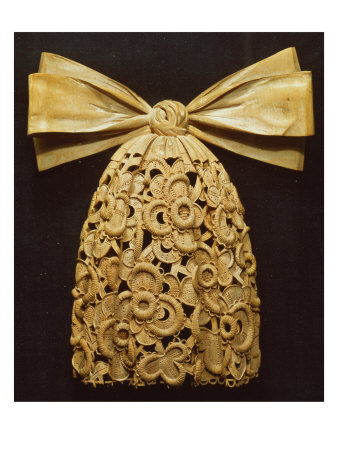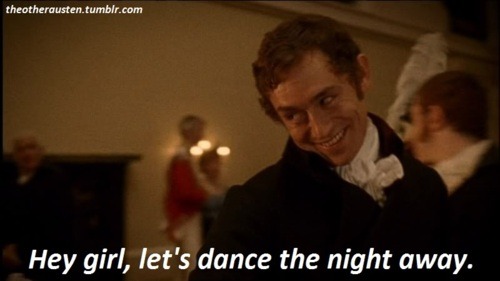Normally, I don't take much of an interest in men's fashion through the ages. I do intend this to be a blog that focuses predominately on women's fashion (sorry, gents, that's just the way it is). But I need to confess something: I love cravats. I think they're dreamy.
For those of you who don't know, a cravat is a type of necktie worn in the 18th and early 19th centuries. For purely illustrative purposes, here's a picture of Colin Firth modeling a cravat.
According to the ever-handy Wikipedia, cravats originated around 1630 when King Louis XIII of France hired Croation mercenaries to protect him and the Cardinal Richelieu against the Duke of Guise and the Queen Mother. The always fashionably curious French adopted the neckties worn by the Croatians and simultaneously mangled the poor word "Croate" until it became "cravate."
The cravat stayed popular until about 1692, when it was replaced by a similar necktie called the Steinkirk. The cravat made a comeback in the 1770's, thanks to the maccaronis (yeah,
those guys). They were popular once again until they morphed into neckties after 1815. They were commonly black, replacing the white linen or muslin ties of the Regency.
Here's a handy tutorial on how to tie a post-1815 cravat/necktie.
 |
| A sculpture of a cravat by Grinling Gibbons. It appears to be made out of a combination of muslin and lace or netting. Source. |
During the Regency, the way a gentleman tied his cravat was one of the only ways he could distinguish himself from other gentlemen in dress without being labeled a fop. A veritable smorgasbord of knots and ties existed.
A gentleman's valet often developed cravat ties for his master. A gentleman's cravat became a sign of his valet's craftsmanship. The fancier the cravat, the better the valet. This is referred to several times in
Pamela Aidan's Darcy Trilogy. The valet would most likely purchase the muslin for the gentleman's cravats as well, unless that gentleman was like Henry Tilney and knew enough about muslin to buy his own
(once again proving that Henry Tilney is the best Austen man of all time). (Or maybe Edward Ferrars.) (Or maybe I should just shut up about Jane Austen now.)




No comments:
Post a Comment
,mmmmmmmmmmmmmmmmmmmmmmmmmmmmmmmmmmmmmmmmmmmmmmmmmmmmmmmmmmmmmmmmmmmmmmmmmmmmmmmmmmmmmmmmmmmmmmmmmmmmmmmmmmmmmmmmmmmmmmmm'aaaaaaaaaaaakAAAQA
I was going to type something clever, but my cat provided this triumph of literature. Thank you for commenting! Just keep it clean, on-topic, and respectful.